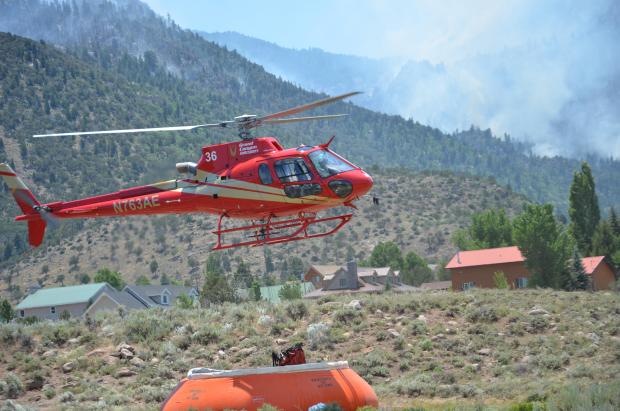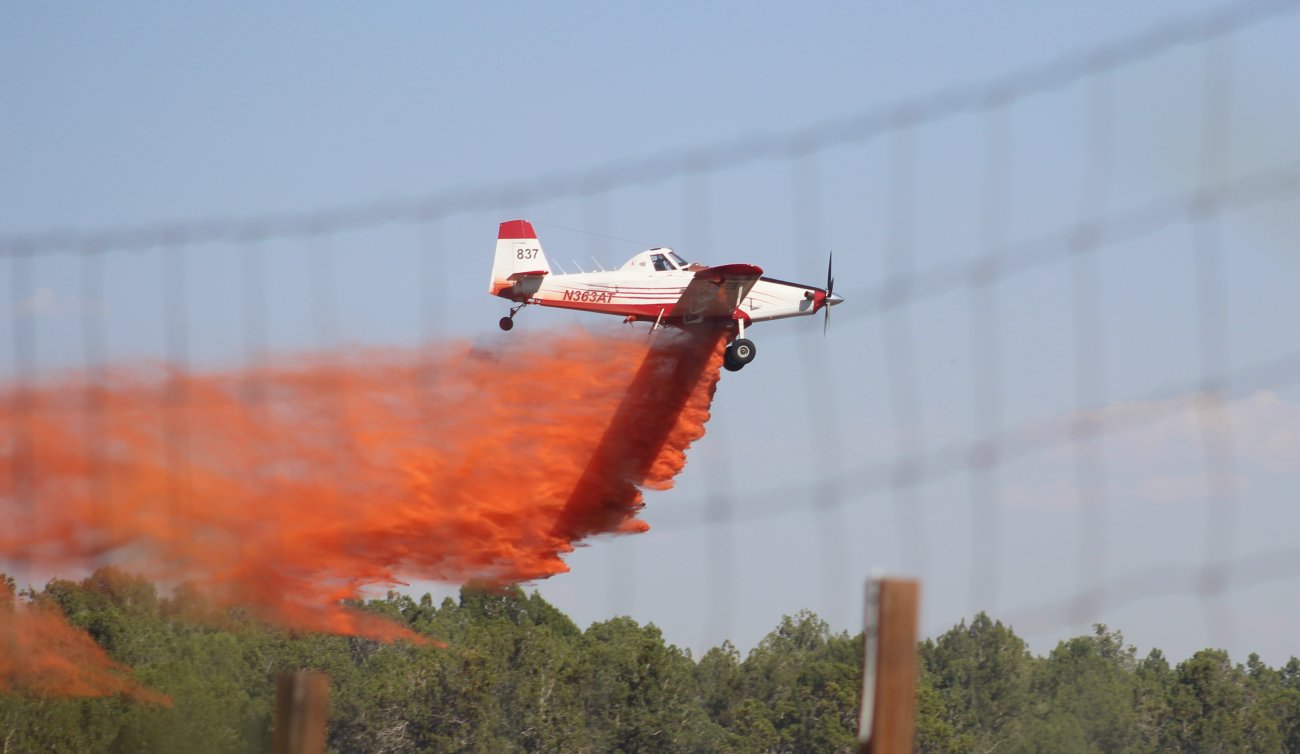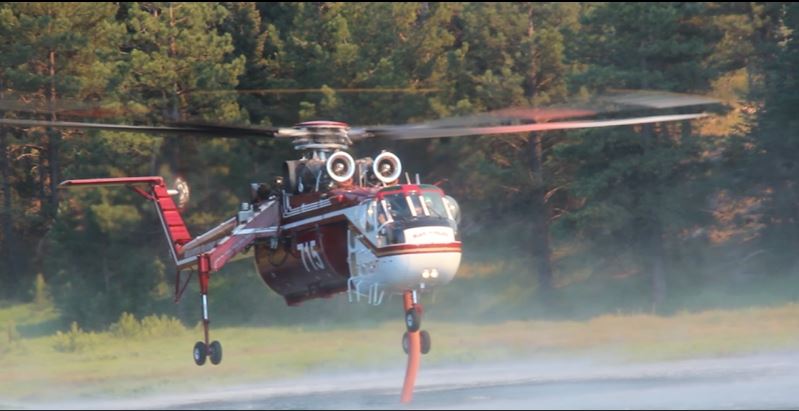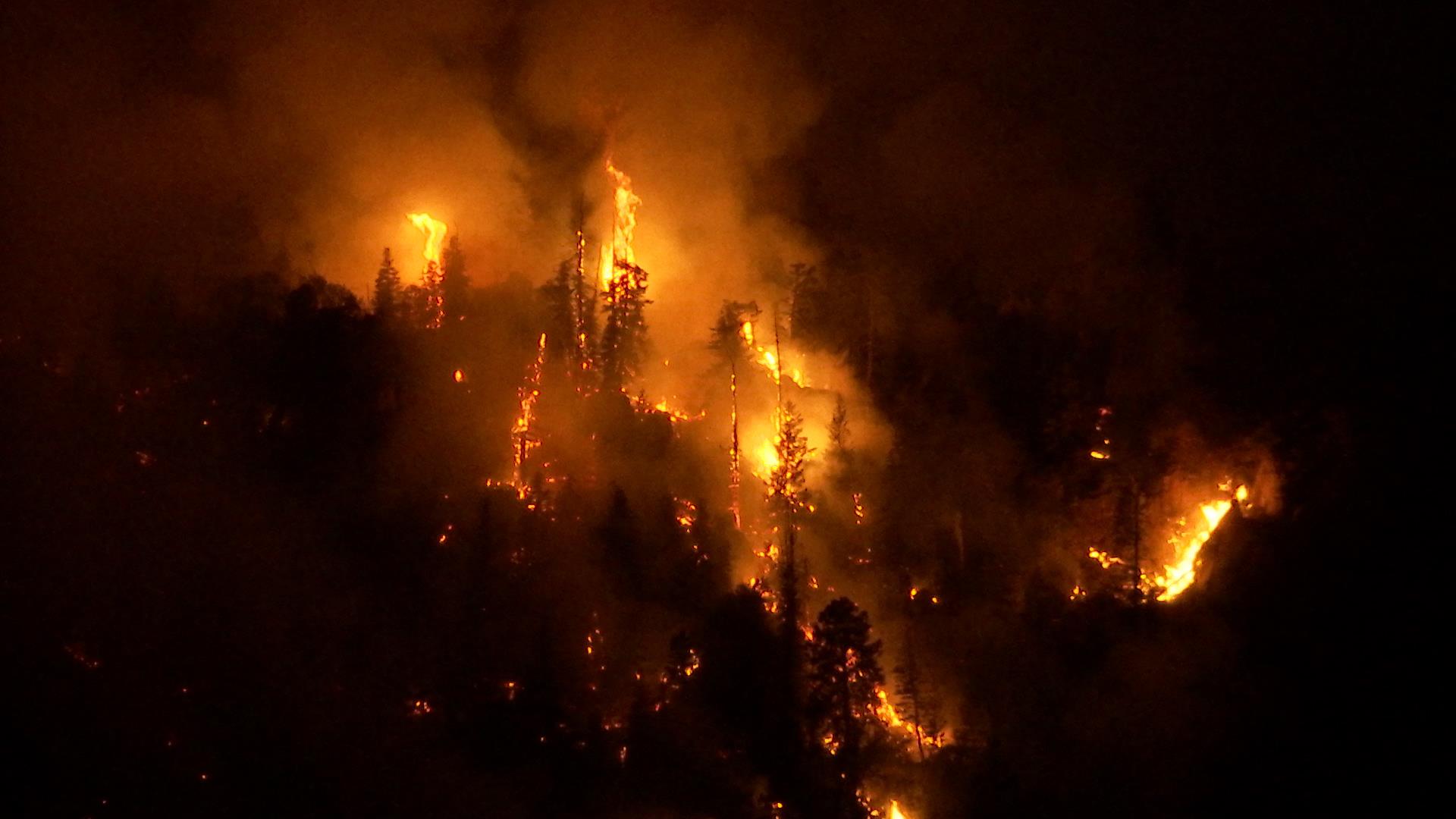
ST. GEORGE – What might be different the next time there’s a drone sighting over a wildfire in Utah?
Chief fire and law enforcement officials will likely have the authority to “neutralize” the small unmanned aircraft in order to drop it from the sky.
Legislation presented by Rep. Don Ipson, R-St. George, and Sen. Evan Vickers, R-Cedar City, passed the Utah House and Senate Wednesday during a special session of the Legislature.

The legislation amends a recently passed law that penalizes drone operators for interfering with wildland firefighting operations. It went into effect two months ago.
Due to repeated drone incursions on the Saddle Fire near Pine Valley, both Gov. Gary Herbert and Southern Utah legislators have called for stiffer penalties for those caught flying drones in the temporary flight restricted zones set up around wildfires.
Drone incursions into wildland fire zones create a potential safety hazard for airborne fire suppression operations, officials have said.
At best, the sighting of a drone will cause firefighting aircraft to change course and temporarily suspend operations overall. At worst, contact with a drone may result in the crash of a plane or helicopter with injury or even death a possibility for the operators.
The latest drone incursion at the Saddle Fire was reported Sunday night. It was the fifth sighting since the fire started June 13.
The new amendments to the law do three specific things, Ipson said as he introduced the bill to the Utah House of Representatives.

It provides for stiffer fines for interfering with fire operations. Fines range from $2,500 to $15,000 depending on the severity of the incident. A convicted drone operator could also serve anywhere from six months to 15 years behind bars.
Judges can impose restitution on a violator in an amount that matches the cost of whatever havoc playing with the drone at a fire zone may have caused. This includes the cost of damages to life and property caused by the fire, as well as the cost of flight operations that were interrupted.
While speaking for the bill in the Utah Senate, Vickers said it was estimated that it cost as much as $8 million more to fight the Saddle Fire because drones grounded flight operations at critical times.
The third amendment to the law allows fire incident commanders and chief law officials overseeing fire operations to disable or “neutralize” the drones so they’re no longer a menace – be it through electronic countermeasures or more traditional means.

“There are different ways to neutralize a drone. The redneck in me (says) just shoot the damn thing,” Vickers said, adding there are more “humane” means by which the drones can be removed from the skies.
There are electronic means available that would allow officials to take down the drone in such a way that it wouldn’t be a danger to other aircraft or people on the ground.
While various individuals in the Utah House and Senate spoke in favor of the legislation, Rep. Brian Greene, R-Pleasant Grove, voiced his concern the enhanced penalties were an overreaction.
Greene said he understood the measure allowing fire and law officials to disable a drone, but he wasn’t so sure making the current law more harsh was needed, particularly since there didn’t appear to be any previous examples of someone being prosecuted and convicted under the current law.

“I’m not convinced that enhancing penalties on a law that’s two months in effect is necessarily the appropriate action to take,” Greene said. “Let’s not overreact and enhance penalties that have not yet even been implemented and enforced a single time.”
Greene said people flying drones at fires may not be aware of the current law or the danger it poses to aircraft and personnel fighting the blaze.
Others who supported the bill said the public is generally made well aware that flying drones around wildfires is a bad idea. Vickers also pointed out how highly publicized the events are in the local press whenever there is a drone sighting.
The amendments passed with a 67-2 vote in the Utah House, with six representatives absent. In the Utah Senate, the measure passed 25-0, with four senators absent.
From Southern Utah, Reps. Ipson, Brad Last, John Westwood amd Michael Noel voted for the amendments. Sens. Evan Vickers and Ralph Okerlund also voted for the measure.
Reps. V. Lowry Snow, Jon Stanard and Sen. Steve Urquhart were absent.
The governor is expected to sign the amendments into law.
Resources
- The legislation: House Bill 3003: Unmanned Aircraft Amendments
Email: [email protected]
Twitter: @MoriKessler
Copyright St. George News, SaintGeorgeUtah.com LLC, 2016, all rights reserved.
Good work, Utah…
Good job with initiating this legislation, Rep Ipsom and Sen Vickers! If people’s lives and homes are at stake, take down these drones by whatever means necessary so fire fighters can do their job.
Open season on drones! We’ve got one in our neighborhood.
Can’t believe it takes legislation to deal with intruding drones in emergency operations. Scene commanders should have the initiative to do what it takes to take care of the problem.
Well I agree with that but with people like Real Life around they would of started crying and whining and complaining that someone invaded their drone air space